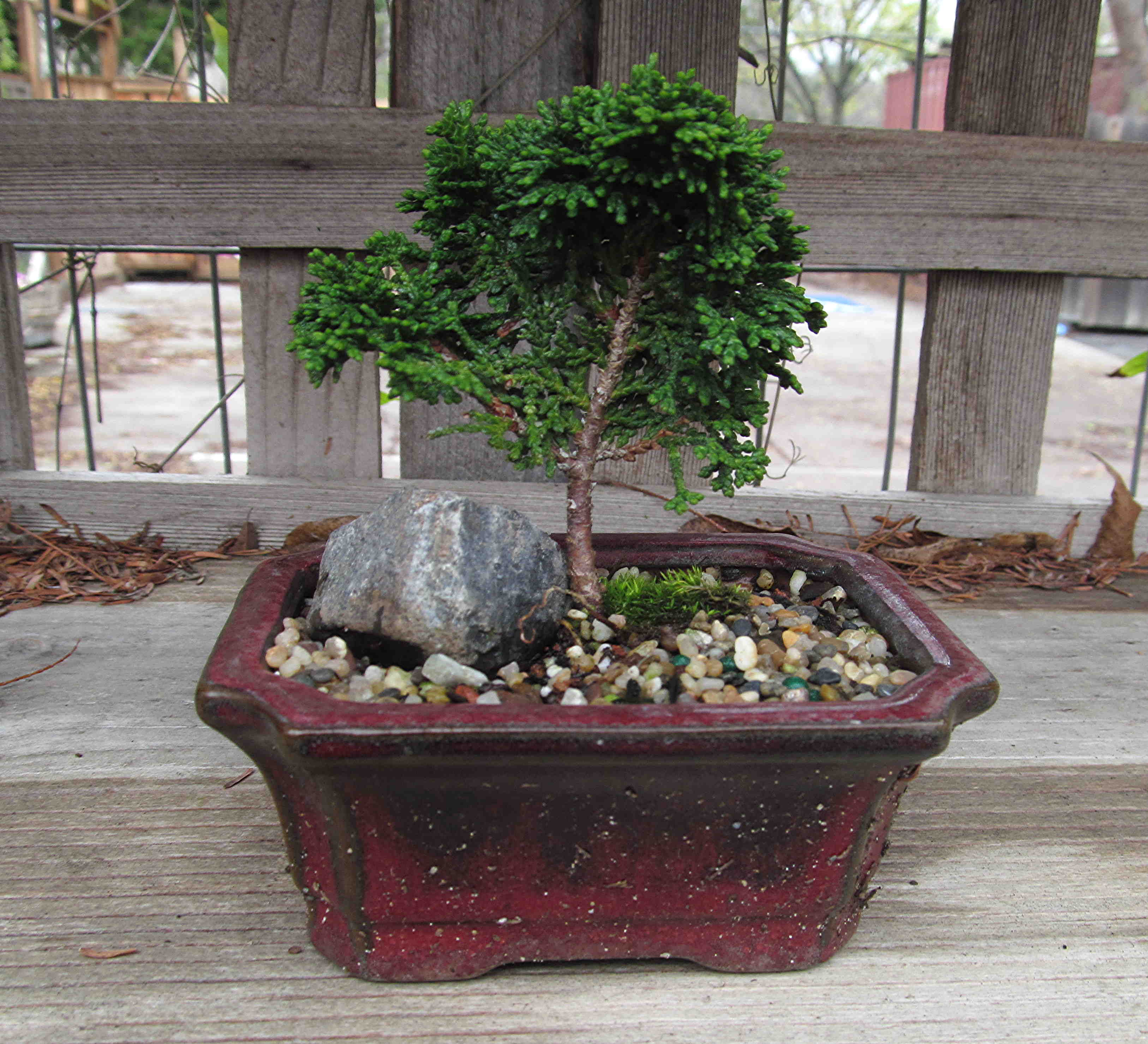General Guide To Bonsai Care
WATERING
Thorough watering is recommended every one to three days in the spring, summer and fall; less in the winter. Do not let the roots dry out completely. If it is very hot and/or windy, watering more than once a day may be necessary.Water until excess water runs out of the drainage holes in the bottom of the pot. In particularly hot, dry weather, or if you are not sure you are watering thoroughly enough, the pot can be placed in a shallow pan of cool standing water (to 1" deep) and soaked for up to 1/2 hour. Notice how heavy the plant is when it is thoroughly watered. The difference in weight between wet and dry will help you to know when the roots are dry, even if the top soil is moist.
FERTILIZING
Time-release or organic fertilizers can be incorporated in the soil at the time of transplanting, or put on the surface once each year or season.Liquid feed can be applied to supplement the slow release feed. But bonsai should be fertilized minimally in general.
OUTDOOR BONSAI
Trees and shrubs from cool temperate climates which have a definite dormant season. The ideal location will have morning sun, afternoon shade, and shelter from drying winds. Avoid heat-reflective walls, and keep off the ground. Generally, outdoor bonsai can tolerate full sun most of the late fall, winter and early spring.Pines and junipers can take full sun year round, but will tend to yellow; for best color, shade them from hottest (midday to late afternoon) sun. Maples, azaleas, rhododendrons, and other plants with delicate foliage should be placed in 50%-70% shade.
If there is a wall or fence behind it, you may need to turn the tree monthly for even lighting and growth Outdoor bonsai may be displayed indoors 2-3 days per month at the most, but keep them away from direct sunlight, fireplaces, and other heat sources.
Winter Protection is not needed for most species in our climate. Sometimes subtropical plants are used for bonsai, and they will need to be brought indoors from late November through February.
INDOOR BONSAI
Indoor bonsai are largely evergreen tropical or sub-tropical plants. Examples include schefflera and bougainvillea. They need bright indoor light, close to (but not touching) an east, south, or west window. Lack of indoor light is the most common problem with growing bonsai.TRIMMING, PRUNING, TRAINING
Trim or pinch off vigorous new growth in the spring and periodically throughout the growing season. Never remove all the new growth at one time, retaining 2 to 3 leaves at the base of the shoot.Remove training wire (if any) after several months by carefully unwinding it. Do not allow wire to stay on the tree long enough to create scars. Although copper wire is considered the best by many bonsai masters, aluminum is widely used and more available.
REPOTTING
Deciduous trees should be repotted every 2-3 years. Slower growing evergreens need repotting every 4-5 years. Examine the root system in late fall to determine if the tree needs repotting. If repotting is required, plan to do it before the start of the next growing season.The plant may be wired into the pot, so you may need to remove that wire first. Carefully unwind the roots and trim off about 20 - 25% of them. Then repot in the same container or a slightly larger one.
Always use a well-drained soil mix containing some sharp sand this makes the roots divide and keeps them vigorous. Pumice is often added for faster drainage. Commercial bonsai soils are available in small bags, or your local nursery may be willing to repot it for you.
PESTS AND DISEASES
Watch for aphids, mealybugs, scale insects, and (in some cases) spider mites. Ask for simple, safe remedies. Most often you can simply wash off the pest with a sharp blast of water. Adapted from Lone Pine Gardens care sheet by Redwood Barn Nursery.www.redwoodbarn.com
Feel free to copy and distribute this article with attribution to this author.
